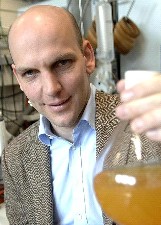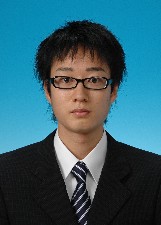Org. Synth. 2009, 86, 11
DOI: 10.15227/orgsyn.086.0011
SYNTHESIS OF TERT-BUTYL (1S,2S)-2-METHYL-3-OXO-1-PHENYLPROPYLCARBAMATE BY ASYMMETRIC MANNICH REACTION
Submitted by Jung Woon Yang, Subhas Chandra Pan, and Benjamin List
1.
Checked by Hisashi Mihara and Masakatsu Shibasaki.
1. Procedure
A. tert-Butyl phenyl(phenylsulfonyl)methylcarbamate (
1).
2 A 500-mL, two-necked, round-bottomed flask is equipped with a magnetic stirring bar and fitted with a glass stopper and an argon inlet. The flask is flushed with argon and charged with
tert-butyl carbamate (13.00 g, 110.9 mmol, 1.00 equiv) (Note 1) and
40 mL of tetrahydrofuran (Note 2).
Water (100 mL),
sodium benzenesulfinate (18.21 g, 110.9 mmol, 1.00 equiv) (Note 3), and freshly distilled
benzaldehyde (11.48 mL, 113.1 mmol, 1.02 equiv) (Note 4) are sequentially added in single portions, followed by
formic acid (99%, 24.3 mL, 643 mmol) (Note 5). The reaction mixture is stirred for 18 h at room temperature under an argon atmosphere, during which time the desired product precipitates. The resulting white solid is filtered through a Büchner funnel (diameter 100 mm) and washed with distilled
water (200 mL). The solid is transferred to a 500-mL single-necked, round-bottomed flask and is slurried in a mixture of
hexane/dichloromethane (150/15 mL). The mixture is stirred for 2 h at room temperature, after which time it is collected by filtration in a Büchner funnel (diameter 100 mm) and washed with
hexane/dichloromethane (91/9 mL). The solid is transferred to a 300-mL round-bottomed flask and dried under reduced pressure (0.5 mmHg) at 25 °C for 6 h to afford 30.79 g (80%)
(Note 6) of the title compound
1 as a white solid.
B. (E)-tert-Butyl benzylidenecarbamate (
2).
3 A 1-L, two-necked, round-bottomed flask equipped with a magnetic stirring bar, a rubber septum, and a reflux condenser capped with an inlet adaptor connected to an argon-vaccum manifold, is charged with anhydrous
potassium carbonate (71.48 g, 517.2 mmol, 6.0 equiv) (Note 7). The solid is placed under vacuum (0.5 mmHg) and flame-dried. The flask is purged with argon and anhydrous
tetrahydrofuran (600 mL) (Note 2) is added via cannula under argon at 25 °C. Then, the septum is removed and compound
1 (29.95 g, 86.20 mmol, 1.0 equiv) is added into the flask. The septum is exchanged for a glass stopper, and the resulting suspension is heated to reflux at 80-85 °C (oil bath temp) with vigorous stirring under argon. After 15 h, the reaction is cooled to 25 °C and the solid is filtered off through alternating layers of Celite (1 cm thick)/Na
2SO
4 (1 cm thick)/Celite (1 cm thick) using a Büchner funnel (diameter 100 mm), and washed with anhydrous
tetrahydrofuran (100 mL) (Note 2). The filtrate is concentrated at 30 °C (water bath temperature) by rotary evaporation (20 mmHg) and dried under vacuum (0.5 mmHg) to give 17.68 g (>99%)
(Note 8) of the corresponding
N-Boc-imine
2 as colorless oil.
C. (1S,2S)-2-Methyl-3-oxo-1-phenylpropylcarbamate (3). A 500-mL, three-necked, round-bottomed flask equipped with a magnetic stirring bar, thermometer, rubber septum and argon inlet is charged with N-Boc-imine 2 (5.00 g, 24.4 mmol, 1.0 equiv). The flask is flushed with dry argon and anhydrous acetonitrile (240 mL) (Note 9) is added via cannula under argon. Freshly distilled propionaldehyde (3.52 mL, 48.7 mmol, 2.0 equiv) (Note 10) is added quickly in one portion by syringe and the flask is sealed and purged with argon. The resulting colorless solution is cooled to 0 °C (internal temperature) with a cryostat. The septum is removed temporarily and (S)-proline (561 mg, 4.87 mmol, 20 mol %) (Note 11) is added. After the reaction mixture is stirred at 0 °C (internal temperature) for 12 h, it is treated with 80 mL of distilled water and warmed to 25 °C. The solution is stirred vigorously for 20 min at 25 °C, diluted with diethyl ether (100 mL), and transferred to a 500-mL separatory funnel. The layers are separated, and the aqueous layer is extracted with diethyl ether (100 mL). The combined organic phases are washed with brine (60 mL), dried over MgSO4 (20 g), filtered through a Büchner funnel, and concentrated by rotary evaporator (30 °C, water bath temp, 20 mmHg). The resulting solid is triturated with cool iso-hexane (4 °C, 70 mL), filtered, washed with an additional portion of cool iso-hexane (4 °C, 15 mL), and dried under vacuum (0.5 mmHg, 25 °C) to afford 5.61 g (87%) (Notes 12, 13) of Mannich product 3.
2. Notes
1.
tert-Butyl carbamate (≥98% purity) was purchased from Fluka and used as received.
2.
Anhydrous
tetrahydrofuran was purchased from Kanto Chemicals and used as received by the Checkers. (Tetrahydrofuran dried by distillation from sodium and benzophenone under an argon atmosphere was used by the Submitters.)
3.
Benzenesulfinic acid sodium salt (98% purity) was purchased from Alfa Aesar and used as received.
4.
Benzaldehyde was purchased from Alfa Aesar and distilled before use (5 mmHg, bp 40 °C).
5.
Formic acid (98%) was purchased from Acros and used as received.
6.
Compound
1 exhibits the following physical and spectroscopic properties: mp: 153-154 °C; IR (KBr) ν 3362, 2975, 2495, 1713, 1311, 1146 cm
-1;
1H NMR
pdf (500 MHz, (CD
3)
2CO) δ: 1.26 (s, 9 H), 6.08 (d,
J = 10.9 Hz, 1 H), 7.45-7.47 (m, 3 H), 7.65-7.75 (m, 6 H), 7.95-7.97 (m, 2 H);
13C NMR
pdf (125 MHz, (CD
3)
2CO) δ: 28.3, 75.3, 80.5, 129.2, 129.9, 130.3, 130.4, 130.6, 131.9, 134.7, 138.8, 154.9; Anal. Calcd for C
18H
21NO
4S: C, 62.23; H, 6.09; N, 4.03. Found: C, 62.29; H, 6.05; N, 4.07.
7.
Anhydrous potassium carbonate as granular form was purchased from Merck.
8.
Compound
2 exhibits the following physical and spectroscopic properties: IR (KBr) ν 3382, 2979, 1717, 1636, 1152 cm
-1;
1H NMR
pdf (500 MHz, (CD
3)
2CO) δ: 1.58 (s, 9 H), 7.57-7.66 (m, 3 H), 7.98-8.00 (m, 2 H), 8.84 (s, 1 H);
13C NMR
pdf (125 MHz, (CD
3)
2CO) δ: 28.1, 82.1, 129.9, 130.5, 134.2, 135.6, 163.5, 168.5; Anal. Calcd for C
12H
15NO
2: C, 70.22; H, 7.37; N, 6.82. Found: C, 69.82; H, 7.30; N, 6.71.
9.
Anhydrous acetonitrile was purchased from Fluka and used without further purification.
10.
Propionaldehyde was purchased from Alfa Aesar and distilled before use (bp 50 °C).
11.
(S)-Proline was purchased from Fluka and used as received.
12.
TLC analysis was performed on Merck silica gel 60 F-254 plates using 15% ethyl acetate in hexanes as eluent. The product has an R
f = 0.33 (visualized with 254 nm UV lamp and stained with
p-anisaldehyde reagent).
13.
The enantiomeric ratio was determined to be >99:1 by chiral HPLC (CHIRALPAK AS-H column, 2%
i-PrOH/heptane, 0.50 mL/min, 220 nm, t
R (minor: 41.2 min), t
R (major: 53.8 min). Compound
3 exhibits the following physical and spectroscopic properties: mp: 127-128 °C; [α]
26.4D +14.6 (
c 1.0, CHCl
3); IR (KBr) ν 3379, 2977, 1721, 1683, 1524, 1174 cm
-1;
1H NMR
pdf (500 MHz, CDCl
3) δ: 1.07 (d,
J = 7.0 Hz, 3 H), 1.42 (s, 9 H), 2.87 (m, 1 H), 5.12 (br s, 1 H), 5.19 (br s, 1 H), 7.24-7.37 (m, 5 H), 9.72 (s, 1 H);
13C NMR
pdf (125 MHz, CDCl
3) δ: 9.5, 28.5, 51.8, 54.9, 80.3, 126.9, 127.9, 129.0, 139.8, 155.3, 203.3; Anal. Calcd for C
15H
21NO
3: C, 68.42; H, 8.04; N, 5.32. Found: C, 68.30; H, 7.99; N, 5.40.
Handling and Disposal of Hazardous Chemicals
The procedures in this article are intended for use only by persons with prior training in experimental organic chemistry. All hazardous materials should be handled using the standard procedures for work with chemicals described in references such as "Prudent Practices in the Laboratory" (The National Academies Press, Washington, D.C., 2011 www.nap.edu). All chemical waste should be disposed of in accordance with local regulations. For general guidelines for the management of chemical waste, see Chapter 8 of Prudent Practices.
These procedures must be conducted at one's own risk. Organic Syntheses, Inc., its Editors, and its Board of Directors do not warrant or guarantee the safety of individuals using these procedures and hereby disclaim any liability for any injuries or damages claimed to have resulted from or related in any way to the procedures herein.
3. Discussion
The catalytic asymmetric Mannich reaction is arguably the most useful approach to synthesize chiral β-amino carbonyl compounds.
4 In 2000, we discovered a proline-catalyzed direct three-component asymmetric Mannich reaction between aldehydes, 4-methoxyaniline, and ketones. This Mannich reaction required the use of an aniline as the amine component.
5 Since the
N-substituent is usually employed as protecting group, it should be easily removable after the reaction has taken place. However, the removal of the commonly used
p-methoxyphenyl (PMP) group from nitrogen often requires drastic oxidative conditions involving harmful reagents such as ceric ammonium nitrate (CAN) that are not compatible with all substrates. We have employed the
tert-butoxycarbonyl (Boc) group as an easily removable protecting group to overcome this drawback.
6 For example, we found the reaction of propionaldehyde with benzaldehyde-derived
N-Boc-imine
7 to give the corresponding chiral β
2,
3-amino aldehyde in high levels of diastereo- and enantioselectivities. Moreover, the product of the reaction was obtained by an aqueous workup/organic extraction process as stable, crystalline solid. Purification can be achieved by trituration with cool
iso-hexane.
Appendix
Chemical Abstracts Nomenclature (Collective Index Number);
(Registry Number)
tert-Butyl phenyl(phenylsulfonyl)methylcarbamate:
Carbamic acid,
N-[phenyl(phenyl-sulfonyl)methyl]-1,1-dimethylether ester; (155396-71-7)
(E)-tert-Butyl benzylidenecarbamate:
Carbamic acid,
N-(phenylmethylene)-1,1-dimethyl-ethyl ester,
[N(E)]-; (177898-09-2)
Carbamic acid,
N-[(1S,2S)-2-methyl-3-oxo-1-phenylpropyl]-1,1-dimethylethyl ester; (926308-17-0)
 |
Benjamin List was born in 1968 in Frankfurt, Germany. He graduated from Freie University Berlin (1993) and received his Ph.D. (1997) from the University of Frankfurt (Mulzer). After postdoctoral studies (1997-1998) as a Feodor Lynen Fellow of the Alexander von Humboldt foundation at The Scripps Research Institute (Lerner), he became an Assistant Professor there in January 1999. Subsequently, he developed the first proline-catalyzed asymmetric intermolecular aldol-, Mannich-, Michael-, and α-amination reactions. He moved to the Max-Planck-Institut für Kohlenforschung in 2003, and currently is a director there and an honorary professor at the University of Cologne. His research interests are new catalysis concepts, bioorganic chemistry, and natural product synthesis.
|
 |
Jung Woon Yang was born in Cheju, Korea, in 1973. He received his Ph.D. in 2003 under the supervision of Drs. Choong Eui Song and Hogyu Han, working on the heterogeneous asymmetric catalysts for dihydroxylation, aminohydroxylation, allylic substitution reactions, and synthesis of DNA triangles with vertexes of bis(terpyridine)iron(II) complexes at the Korea Institute of Science and Technology (KIST) and Korea University, respectively. He undertook postdoctoral studies (2003-2006) at Max-Planck-Institut für Kohlenforschung, with Prof. Benjamin List, where he worked on the development of asymmetric organocatalytic reactions, including transfer hydrogenation, the Mannich reaction, and cascade reactions. In 2006, he became a senior scientist in the List group.
|
 |
Subhas Chandra Pan was born in 1980 in Hooghly (West-Bengal), India. He obtained his B.Sc. degree in Chemistry Honours in 2001 from Calcutta University and M.S. degree in 2004 from Indian Institute of Science, Bangalore. During his MS thesis he worked in Prof. Goverdhan Mehta's laboratory on the total synthesis of epoxyquinone natural products. He obtained his PhD degree (summa cum laude) with Prof. Benjamin List at the Max-Planck-Institut für Kohlenforschung, Mülheim an der Ruhr, Germany and his research interest focuses on the development of new organocatalytic reactions.
|
 |
Hisashi Mihara was born in 1981 in Shiga, Japan. He received his M.S. degree in 2006 from the University of Tokyo. He is pursuing a Ph.D. degree at the Graduate School of Pharmaceutical Sciences, The University of Tokyo, under the guidance of Professor Masakatsu Shibasaki. His current interest is catalytic enantioselective total synthesis of biologically active compounds.
|
Copyright © 1921-, Organic Syntheses, Inc. All Rights Reserved